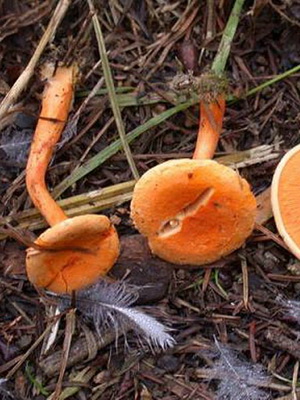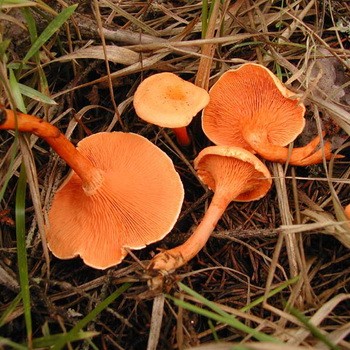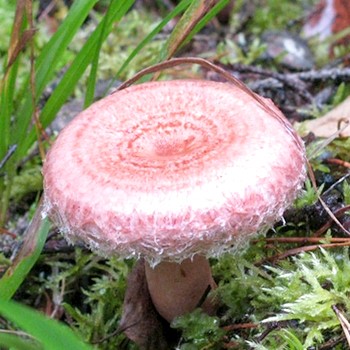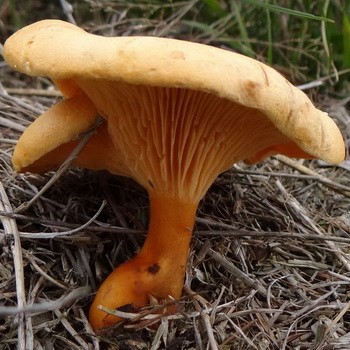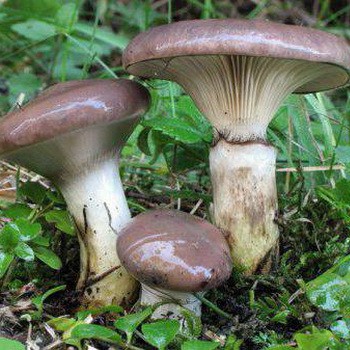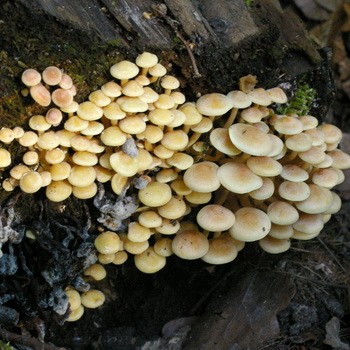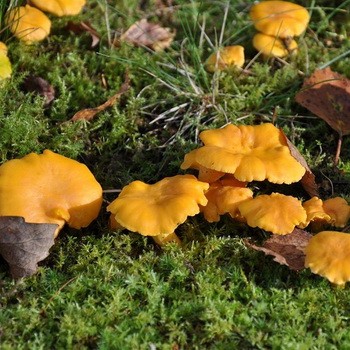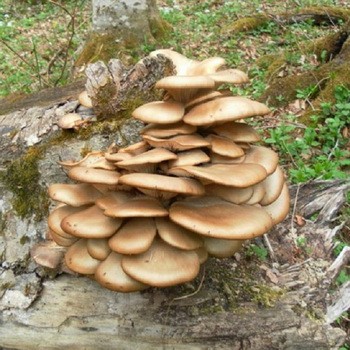False and real chanterelles: similarities and differences

Content
Characteristic differences of false chanterelles from real ones
A characteristic difference between real chanterelles and false chanterelles is that the former never grow in single specimens. Finding one edible mushroom in the forest, you should look around and look under the fallen leaves. Most likely, there you will find a whole family of chanterelles.
Before you understand the differences between false and real foxes, you should determine the potential danger of inedible species. Often, mushroom pickers throw out the entire harvested forest just because several false chanterelles have fallen into their basket. However, many experts do not believe that they cause serious damage to the human body. Although the taste of false chanterelles is worse than real ones, and the smell is not very pleasant, they are still classified as conditionally edible mushrooms, but not poisonous. The hardest thing that can happen with these fruiting bodies is a small intestinal upset.
Many lovers of “silent” hunting compare false and real foxes with red fox ponytails, as if sticking out of holes. Hats and legs of edible chanterelles are always one piece. The plates gradually descend to the middle of the stem, and almost the entire mushroom has one color. The shade of false chanterelles is brighter, and the leg is noticeably thinner.
However, the main difference between true and false chanterelle mushrooms is the absence of the first signs of worminess in the first. This is due to the presence of chitinmannosis in the pulp, a substance that prevents outsiders from living in the fungus’s body and eating it. Inedible species of chanterelles are readily eaten by insects and worms.
We offer you to look at a few photos of this and false foxes to see their similarities and main differences:

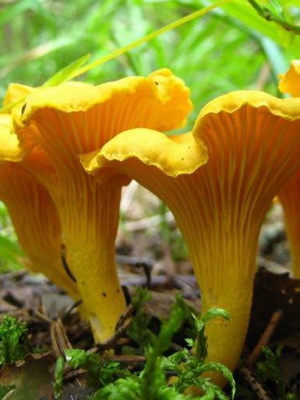
How to distinguish false foxes from real ones by external signs
You can distinguish false foxes from real ones by the following external signs:
- The caps of the edible chanterelles have wavy edges, while the false representatives have regular and even edges.
- Real mushrooms have a pleasant fruity smell, reminiscent of a peach or apricot, false - the smell of rot.
- Good chanterelles always grow in large groups, false chanterelles grow in solitary specimens.
- Original chanterelles usually grow in moist moss, grass or litter, preferring pine trees, birch, oak and beech; false chanterelles grow on fallen rotting trunks and branches.
- When pressed, the flesh of the edible chanterelle changes color and turns red; the false chanterelle never changes color.
- The surface of the hat of a real fox is smooth and dull, the skin is difficult to separate from the pulp. In false chanterelles, the peel is easily removed, and the surface of the cap has some roughness.
- In a real fox, the legs are thick and do not have a void inside, the false appearance of the mushroom grows with a thin hollow leg.
A common feature between real and false chanterelles is the fact that they grow in the same mixed or coniferous forests, preferring a temperate climate. In addition, the collection of edible chanterelles occurs in the months of August and October, precisely the time when the false ones grow.
The photos below will help determine the real and false chanterelle mushrooms. They will be especially interesting for beginners of the "quiet hunt". Knowing these differences, each of them will be able to collect only edible and safe chanterelles in their baskets.

